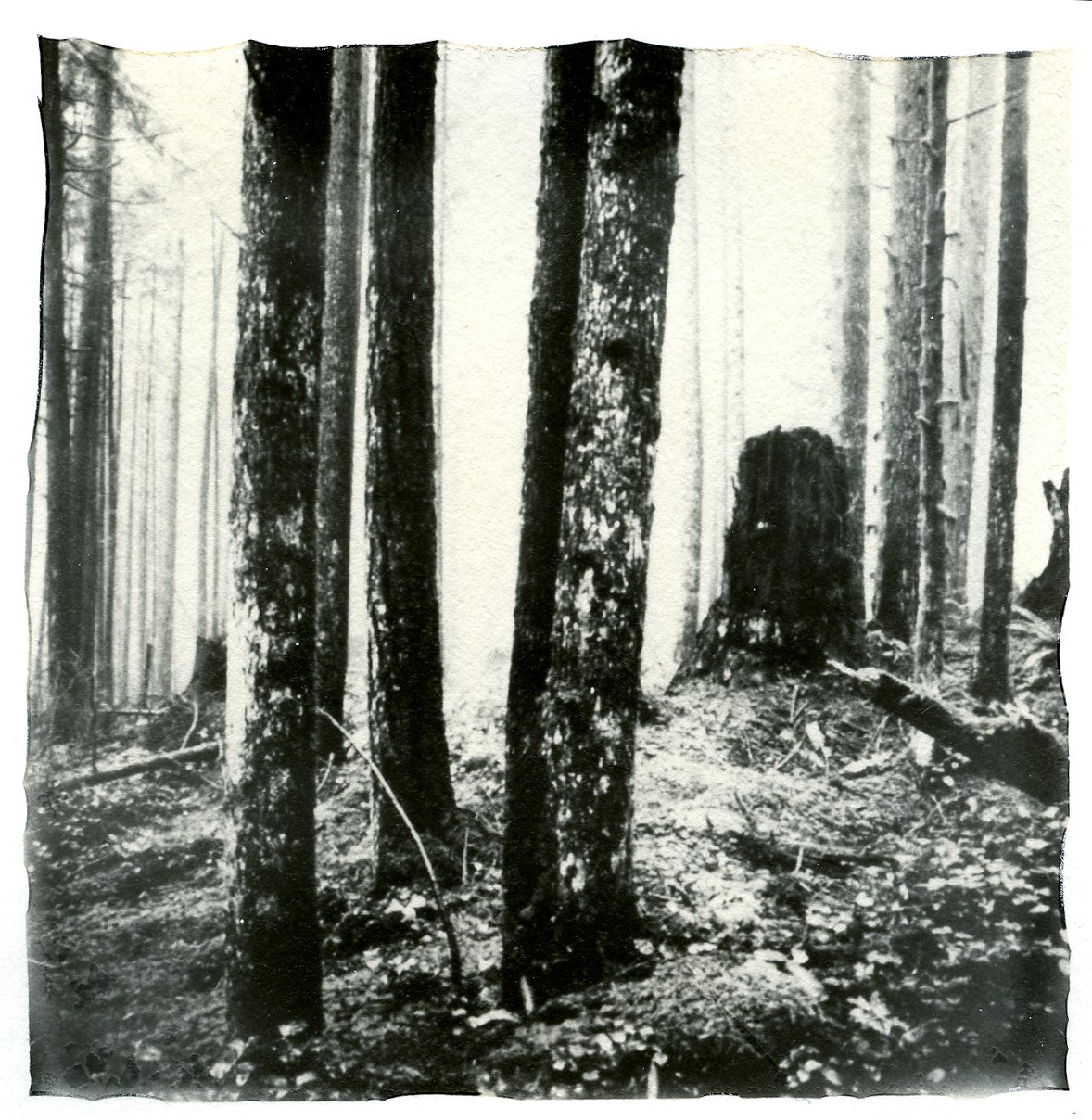
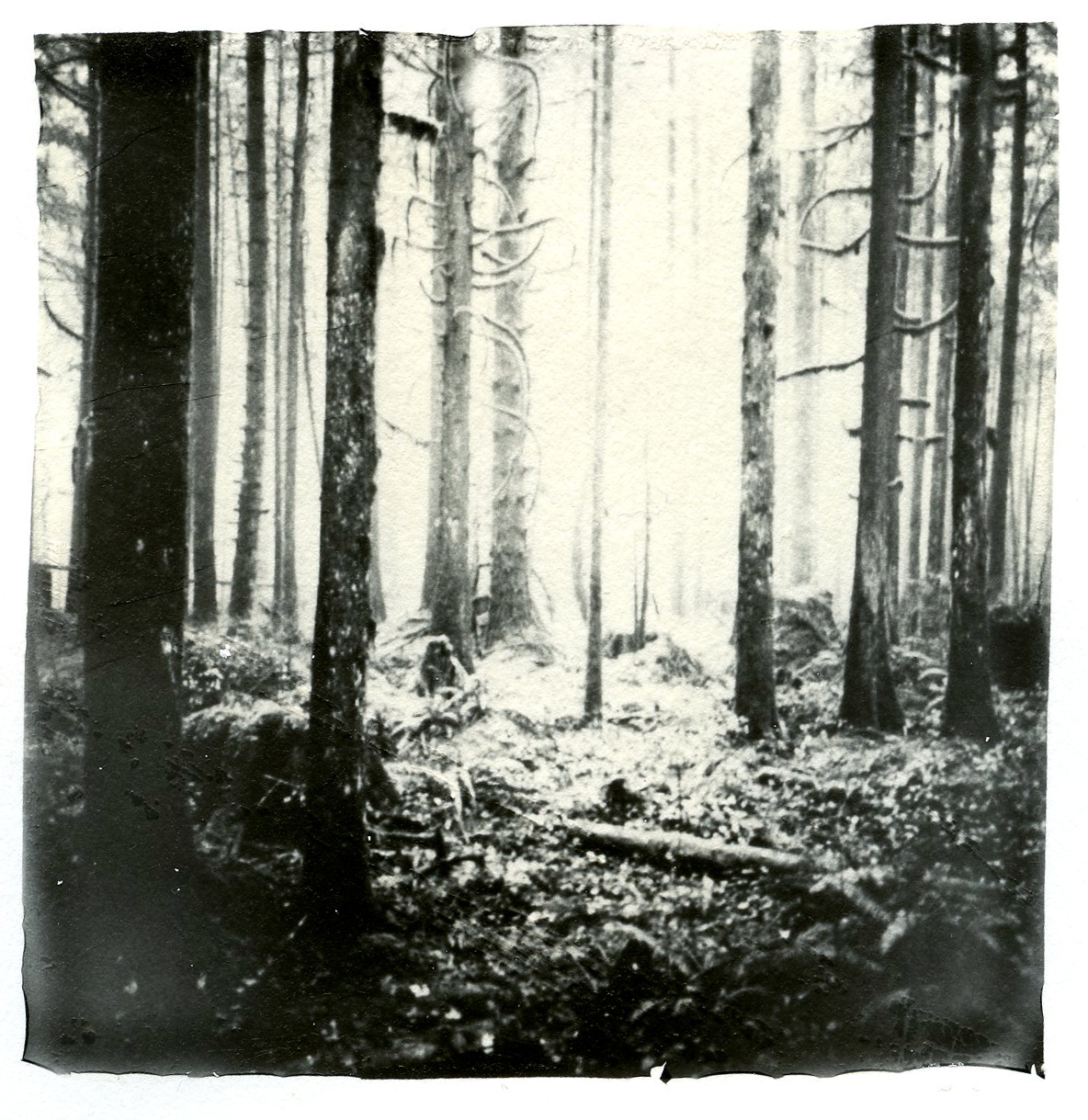
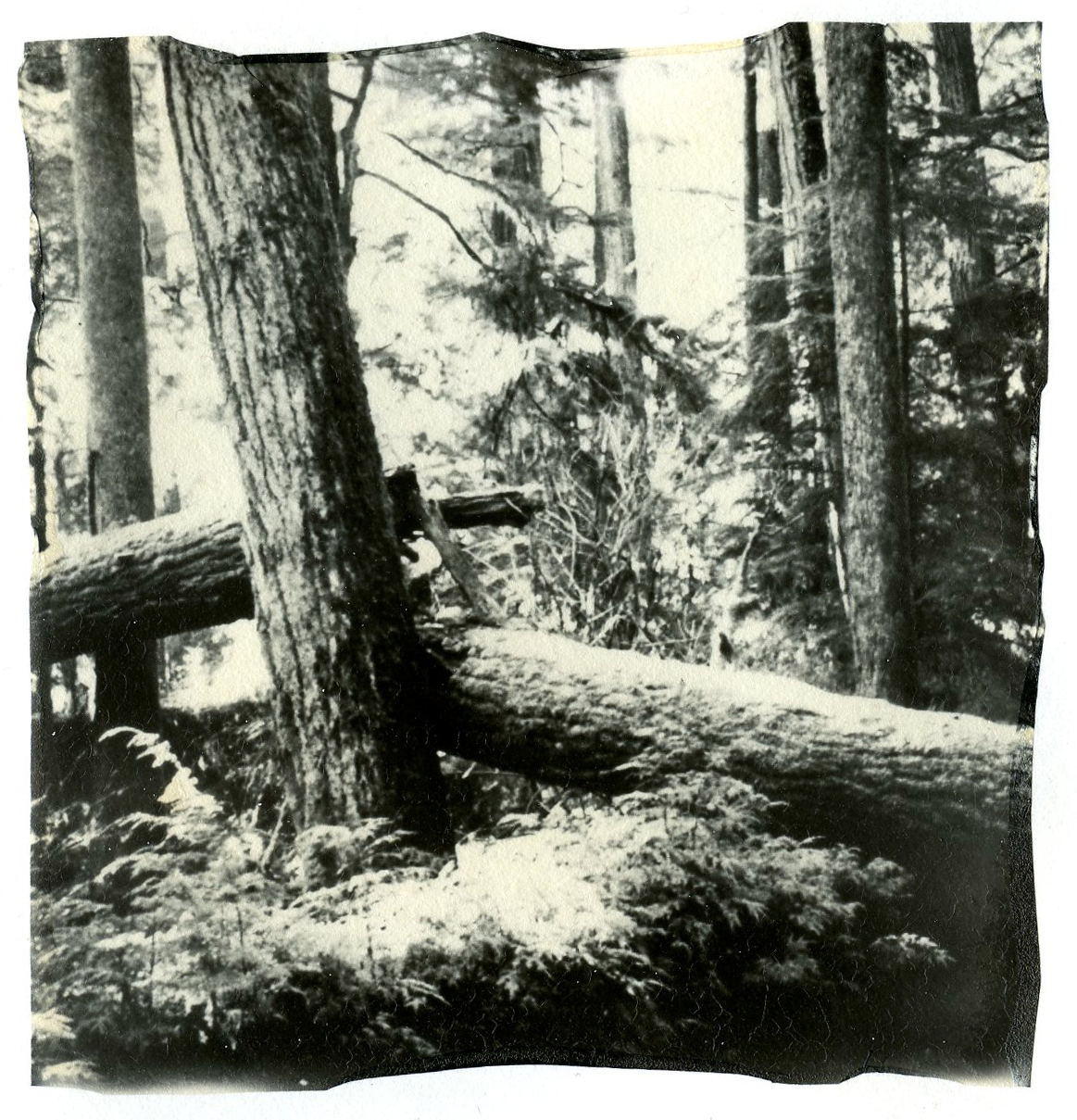
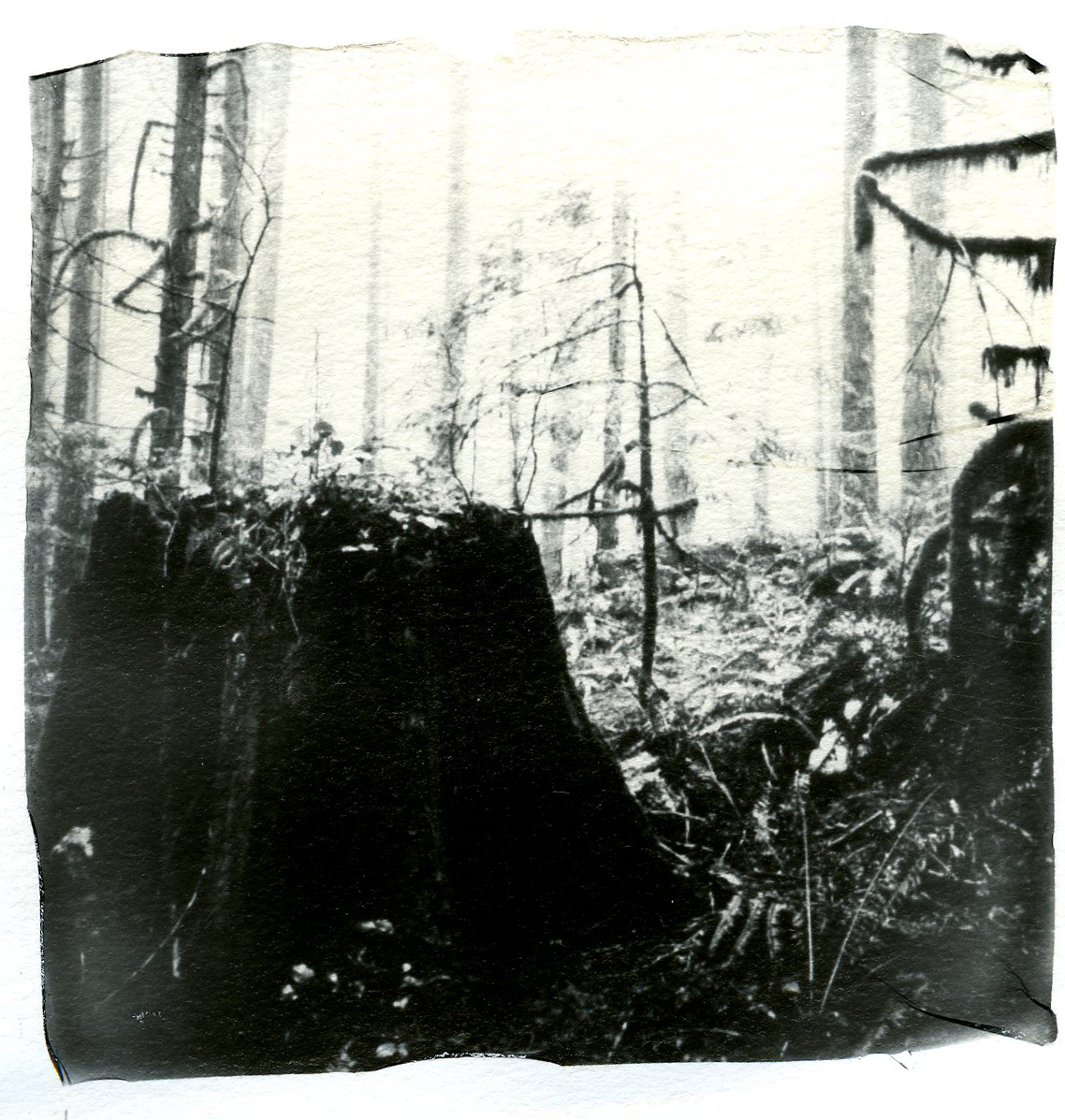
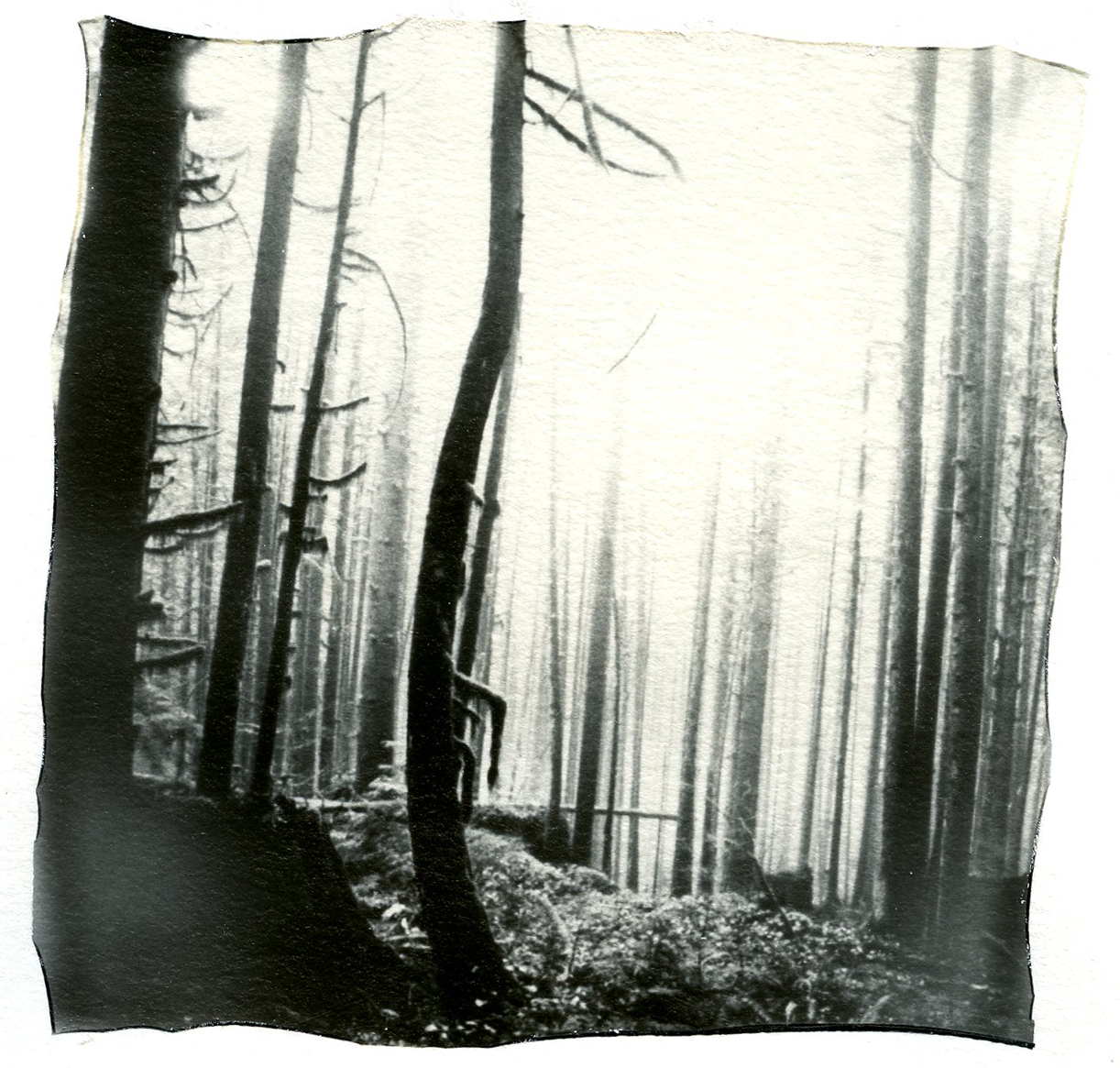
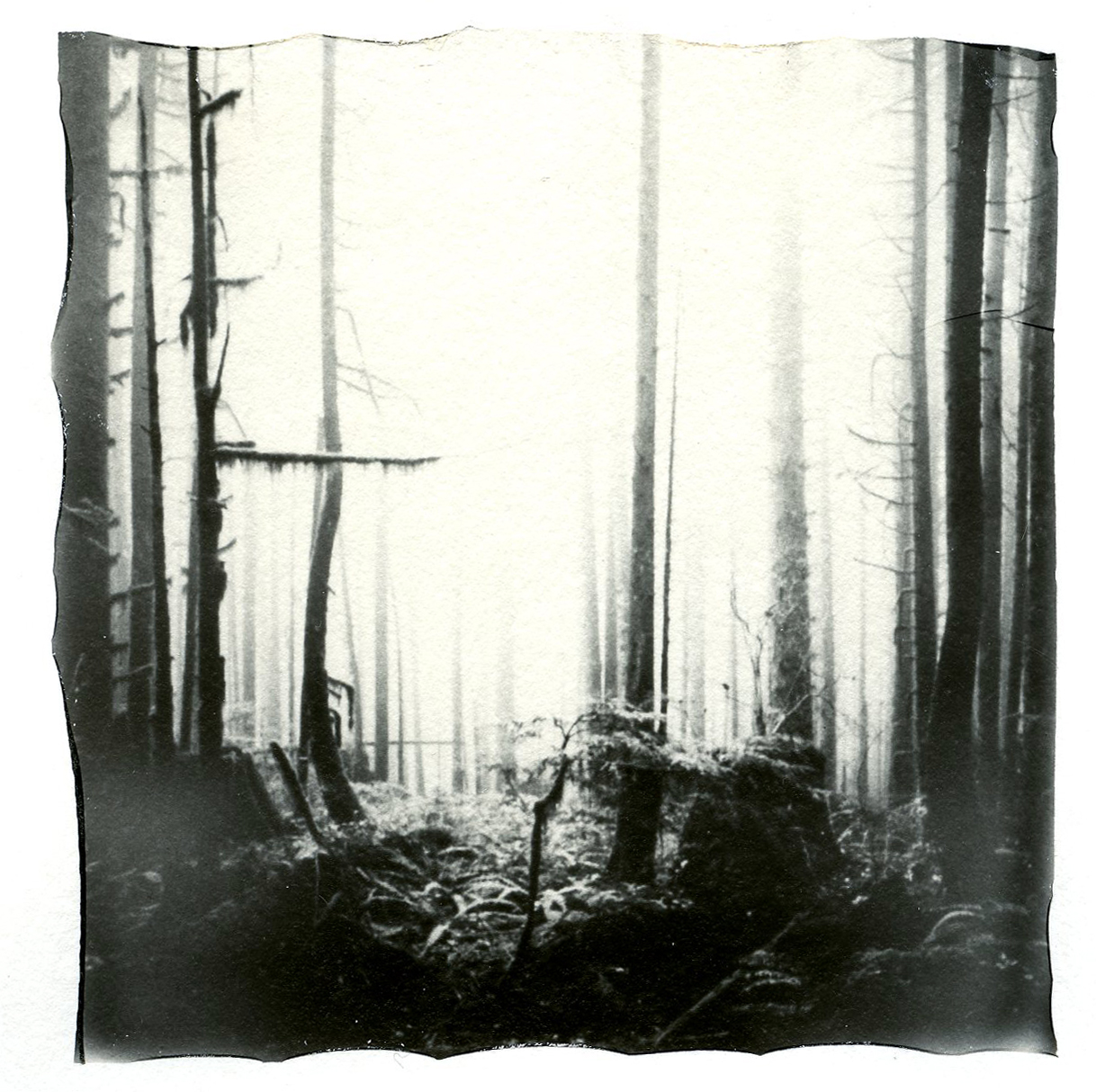
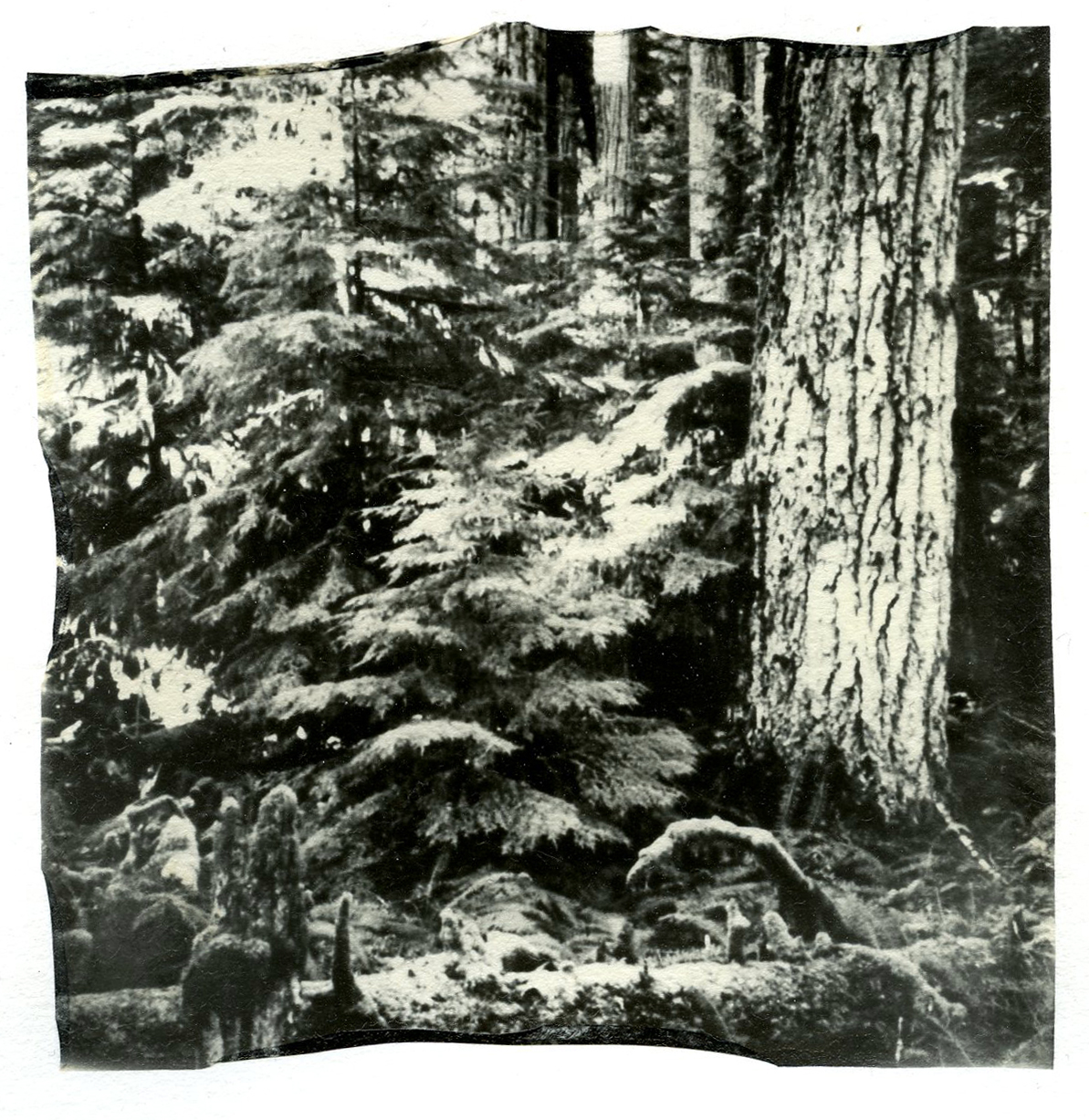
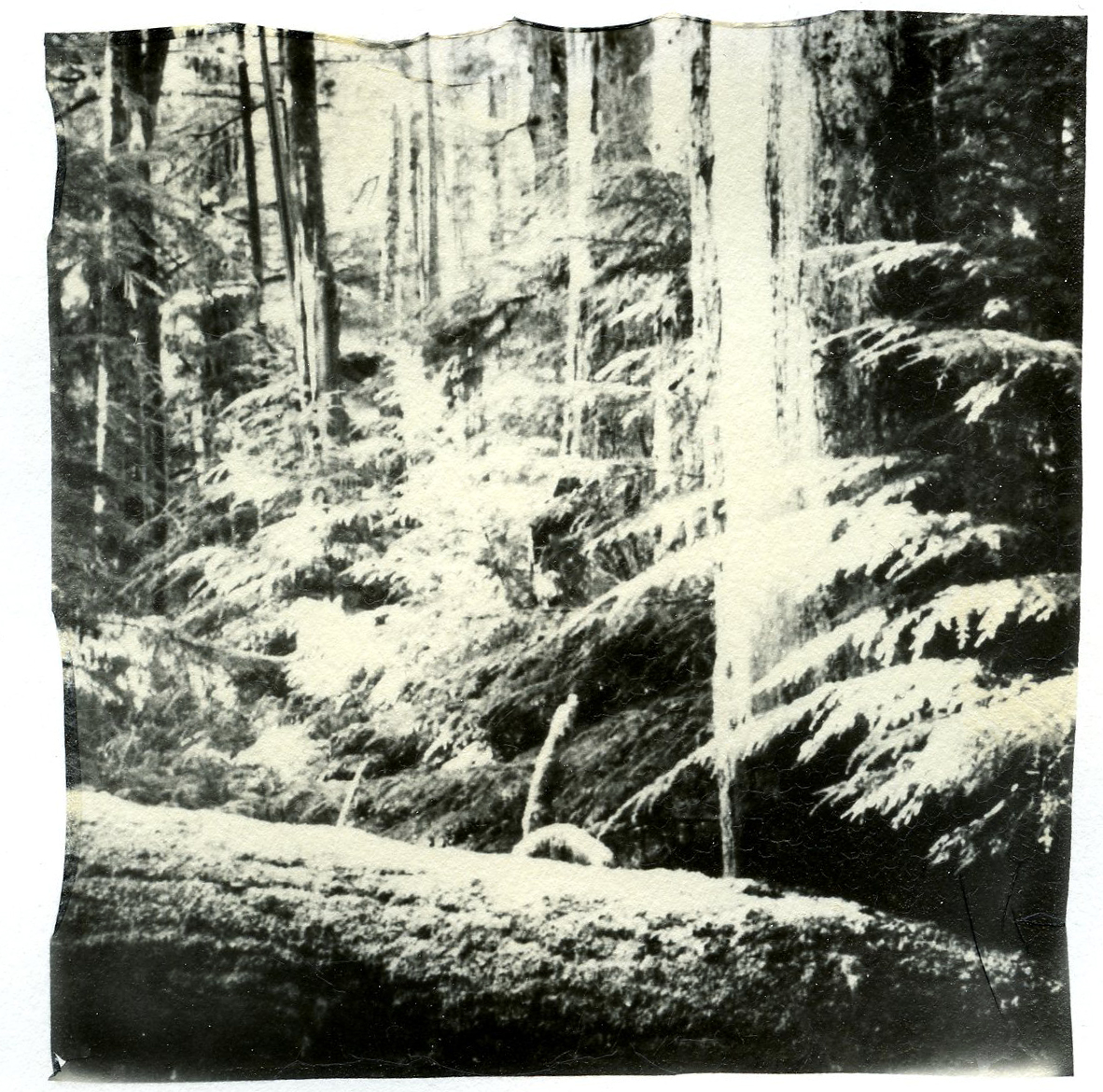

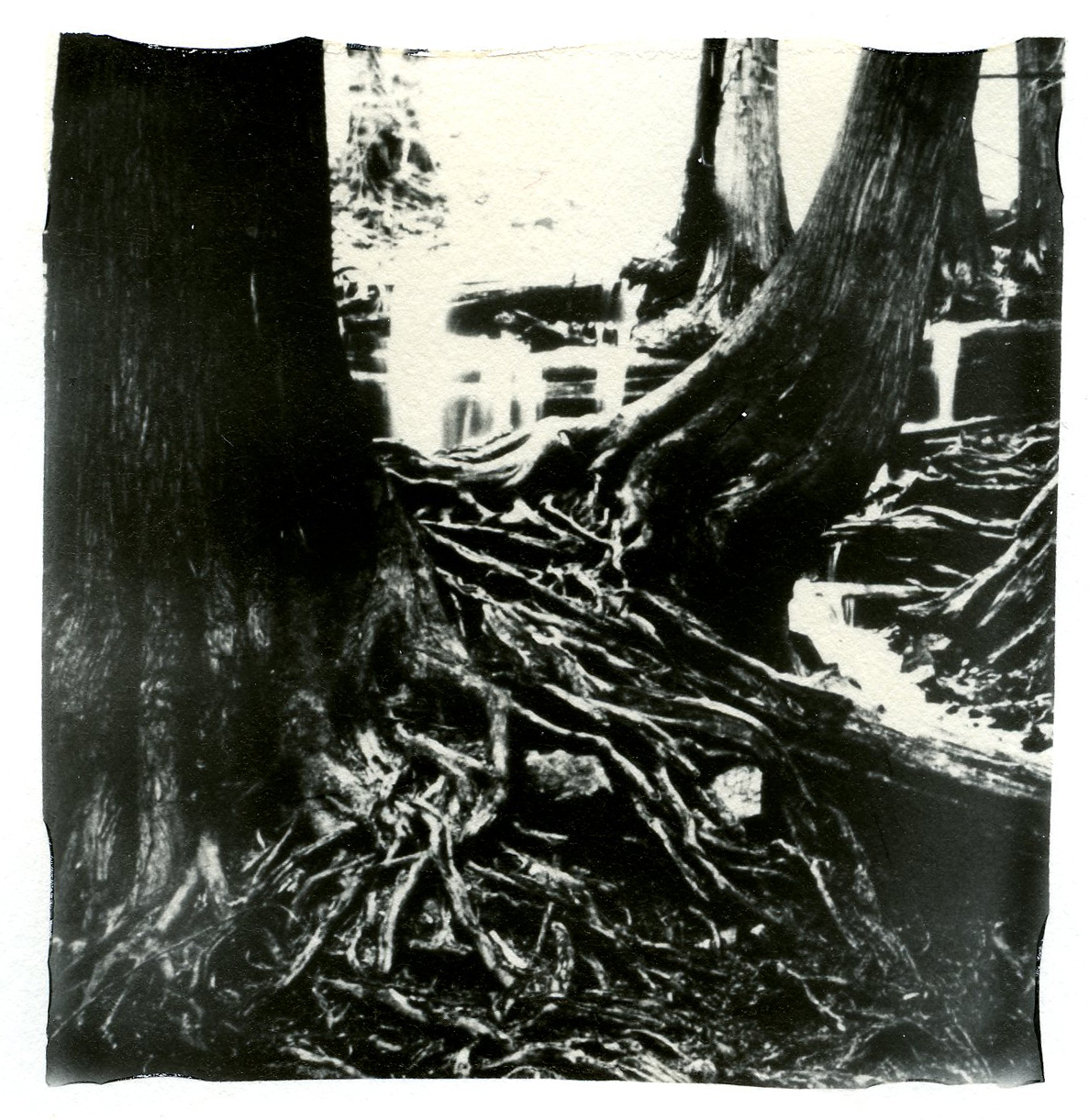
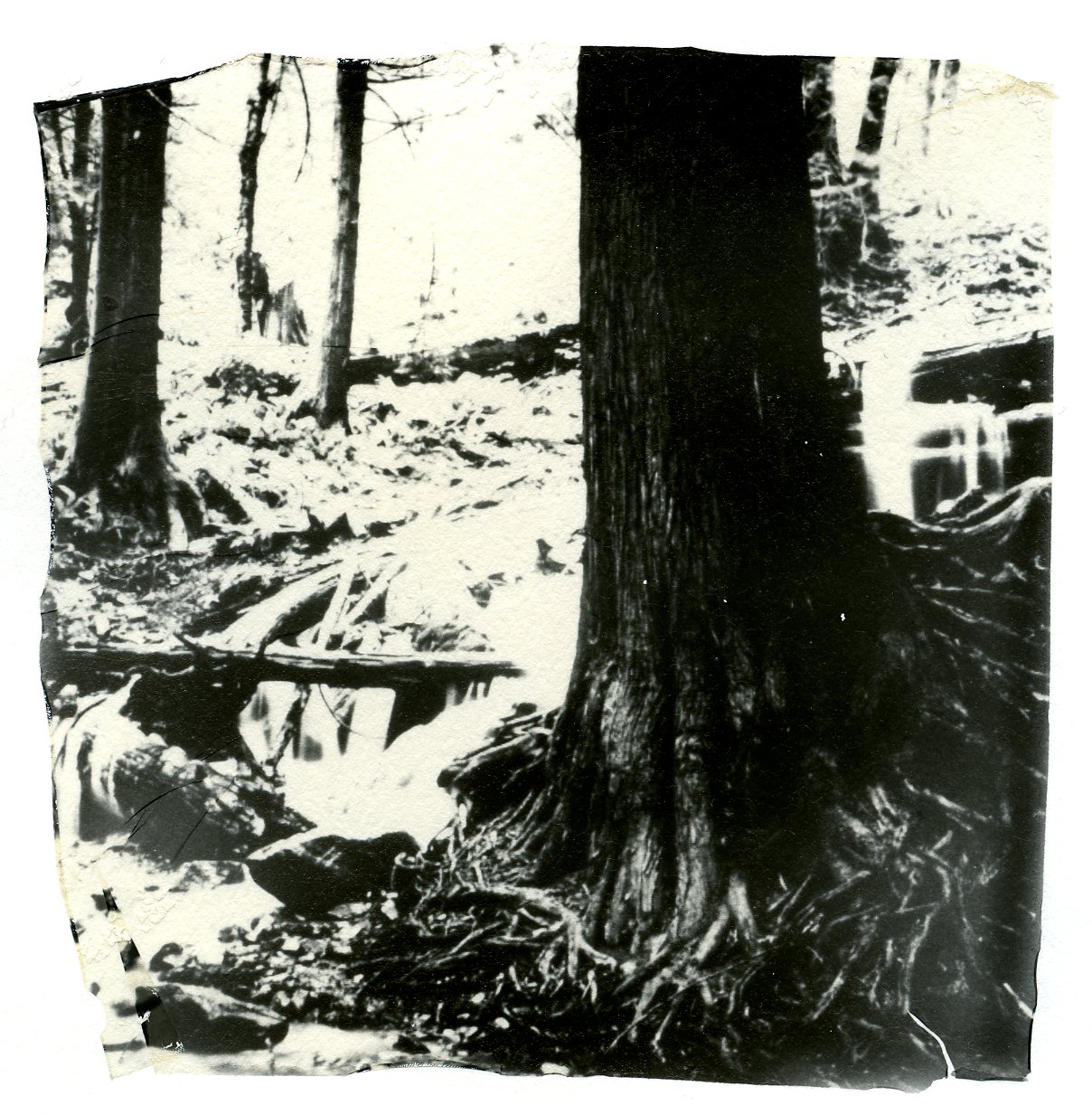
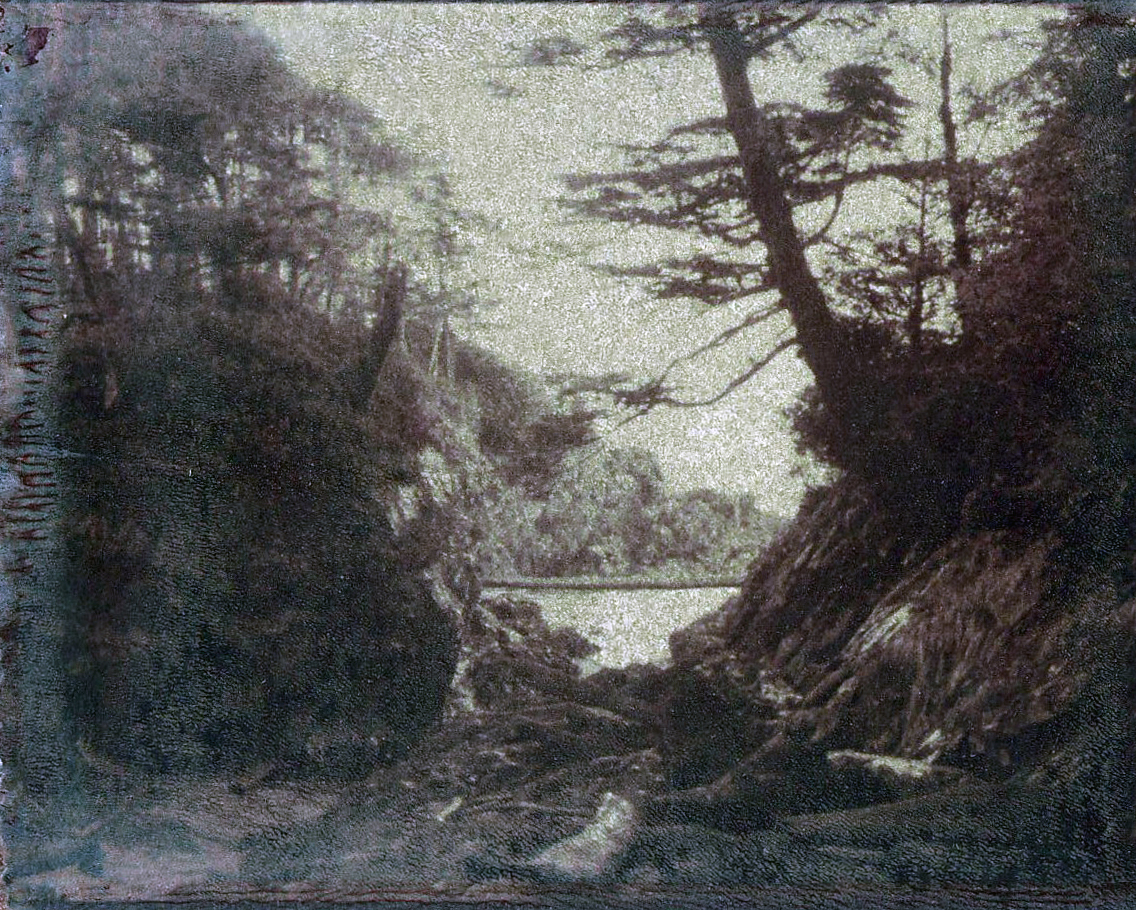
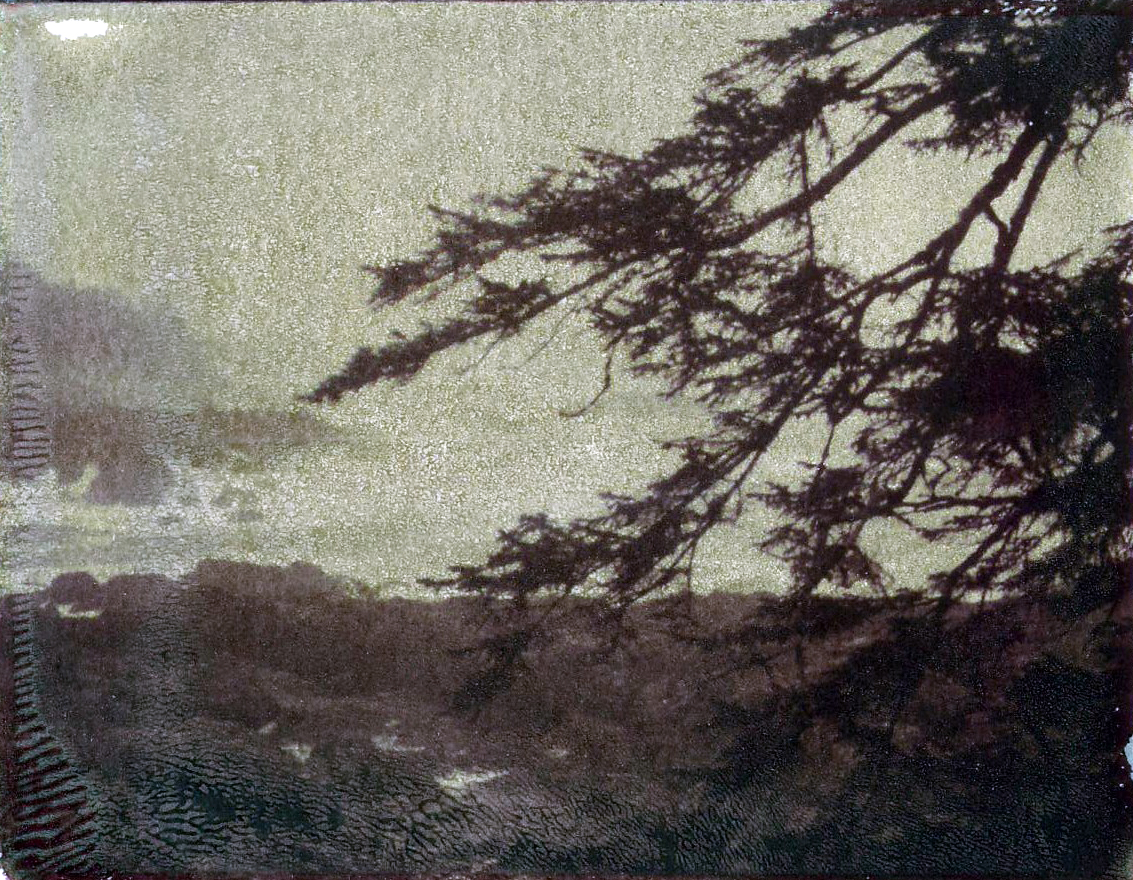
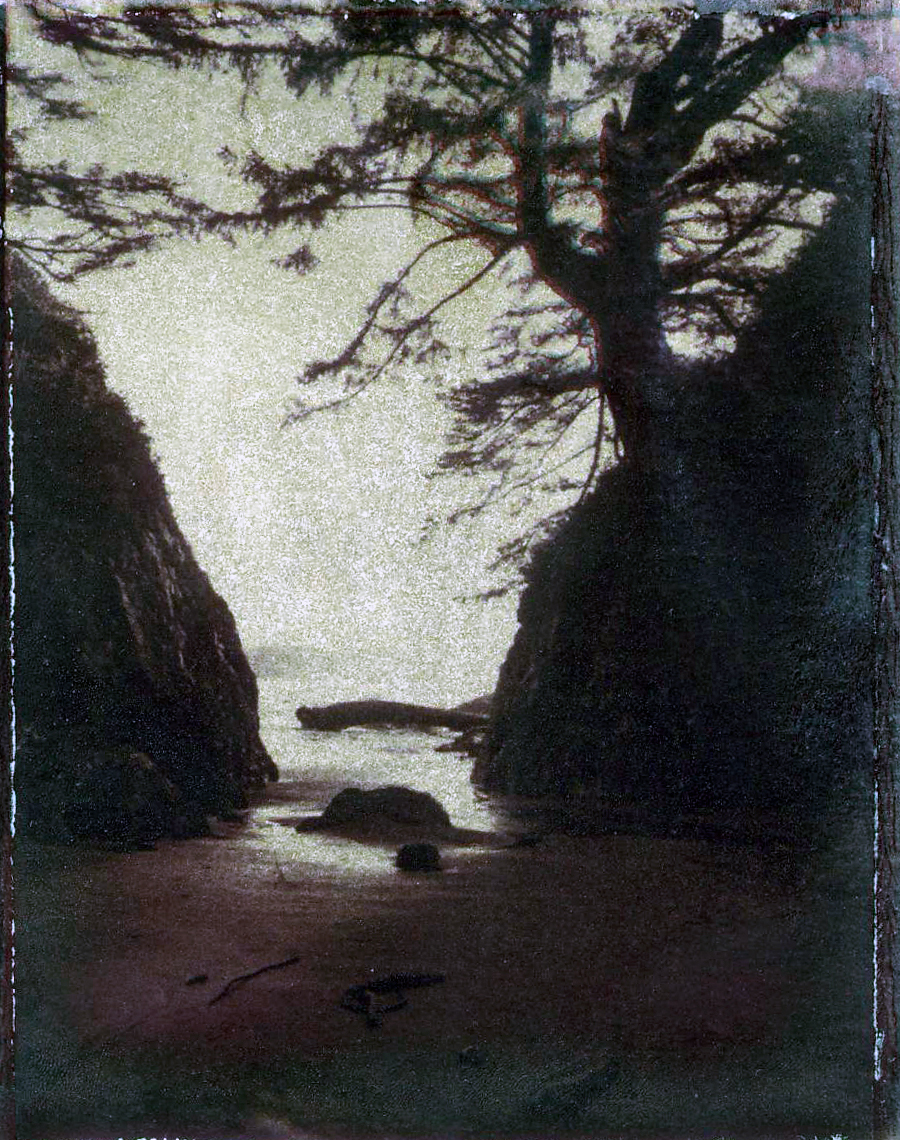

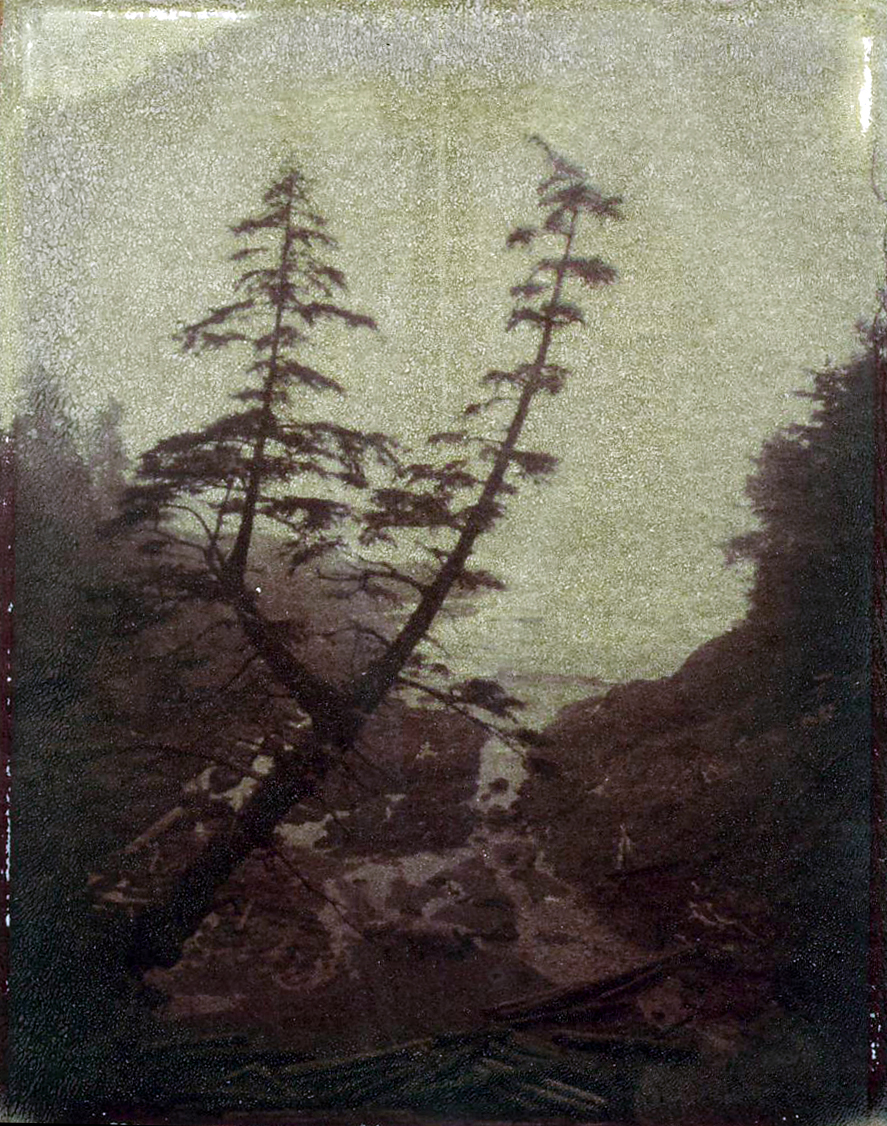

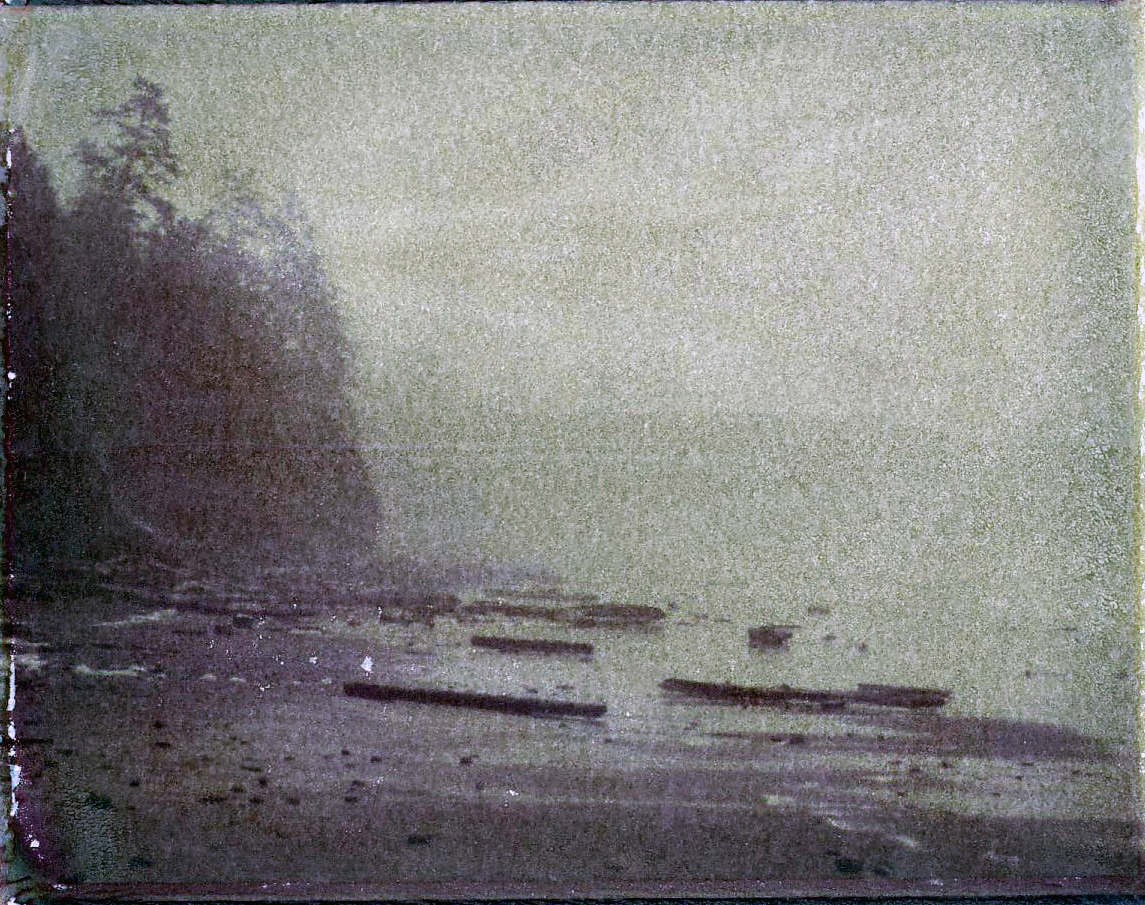
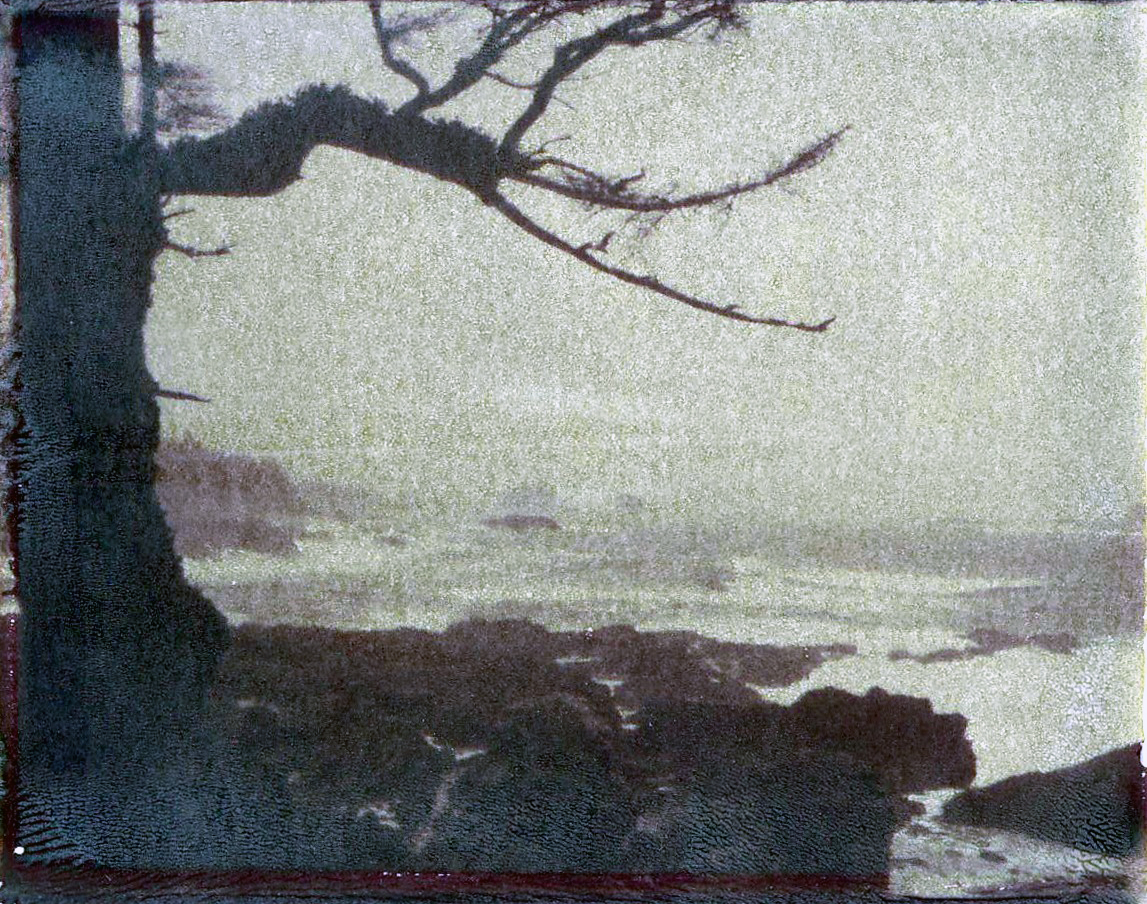
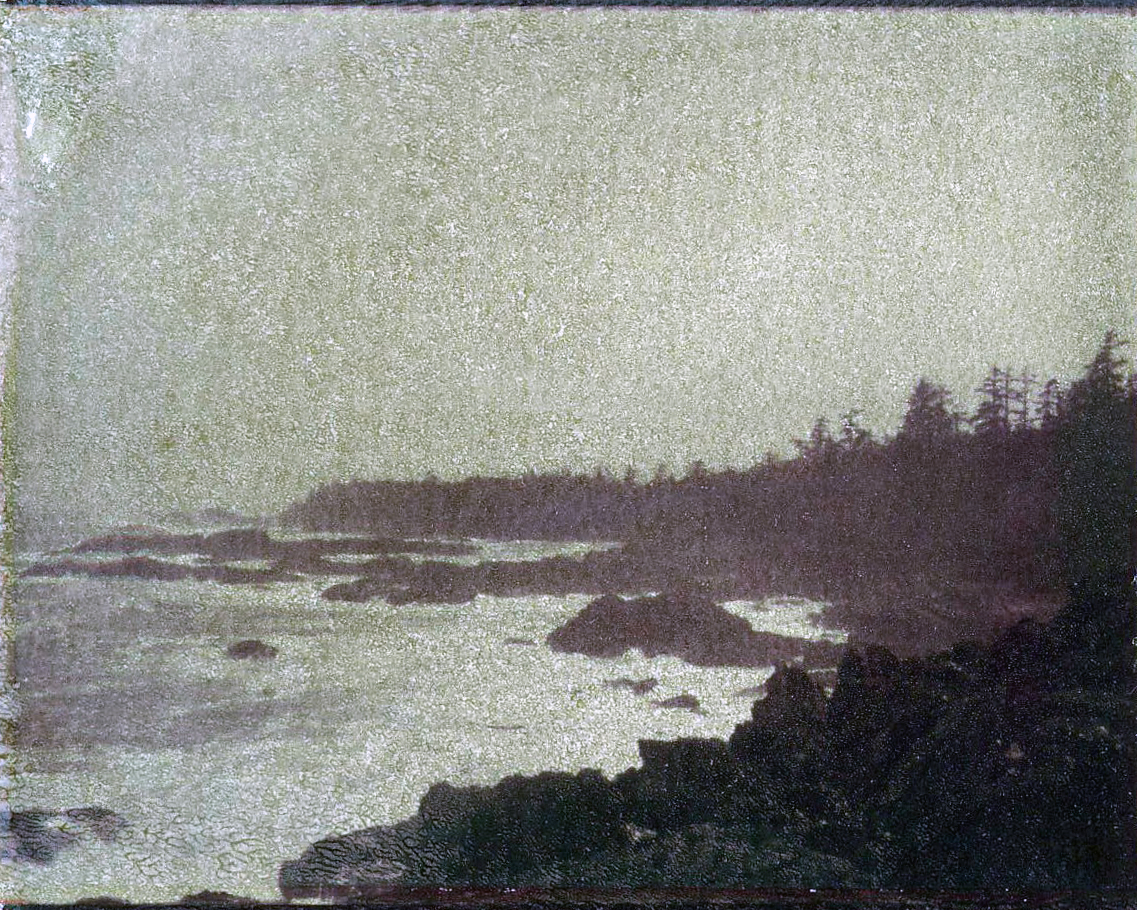
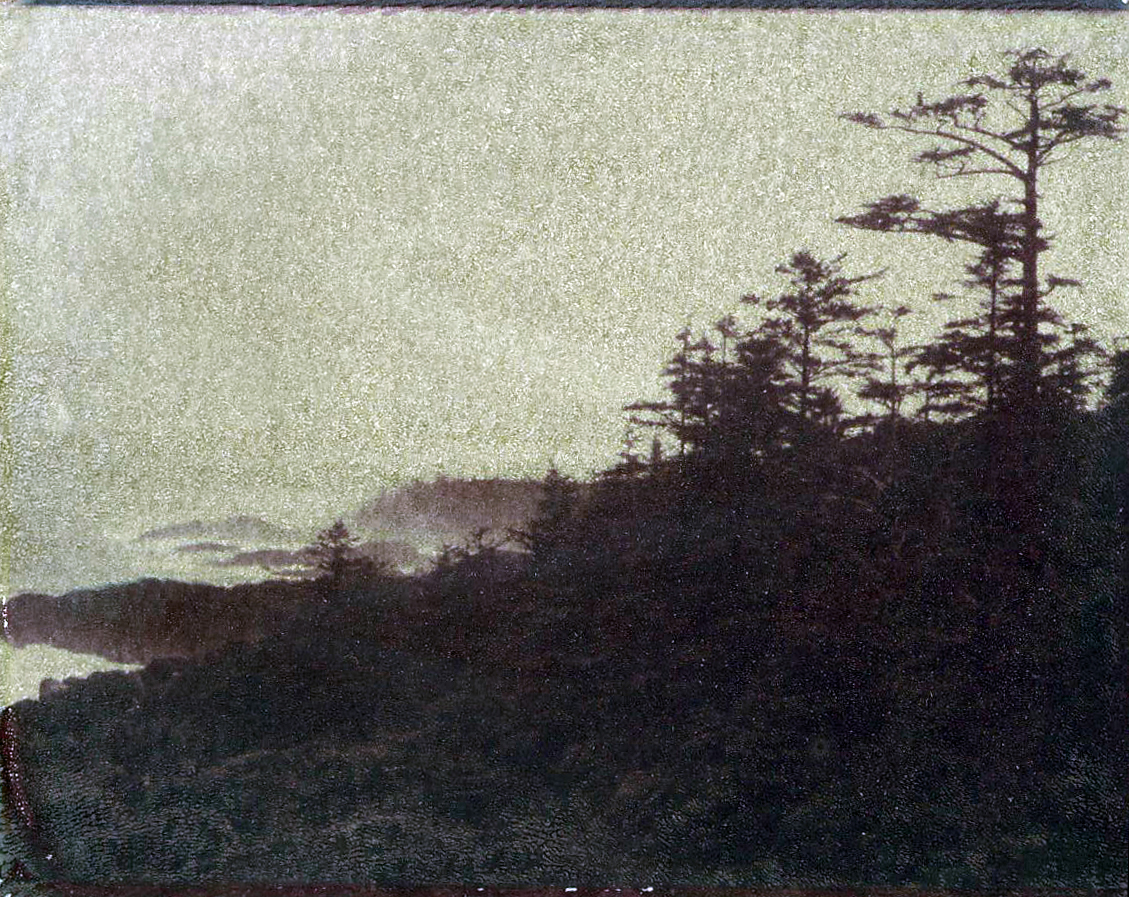
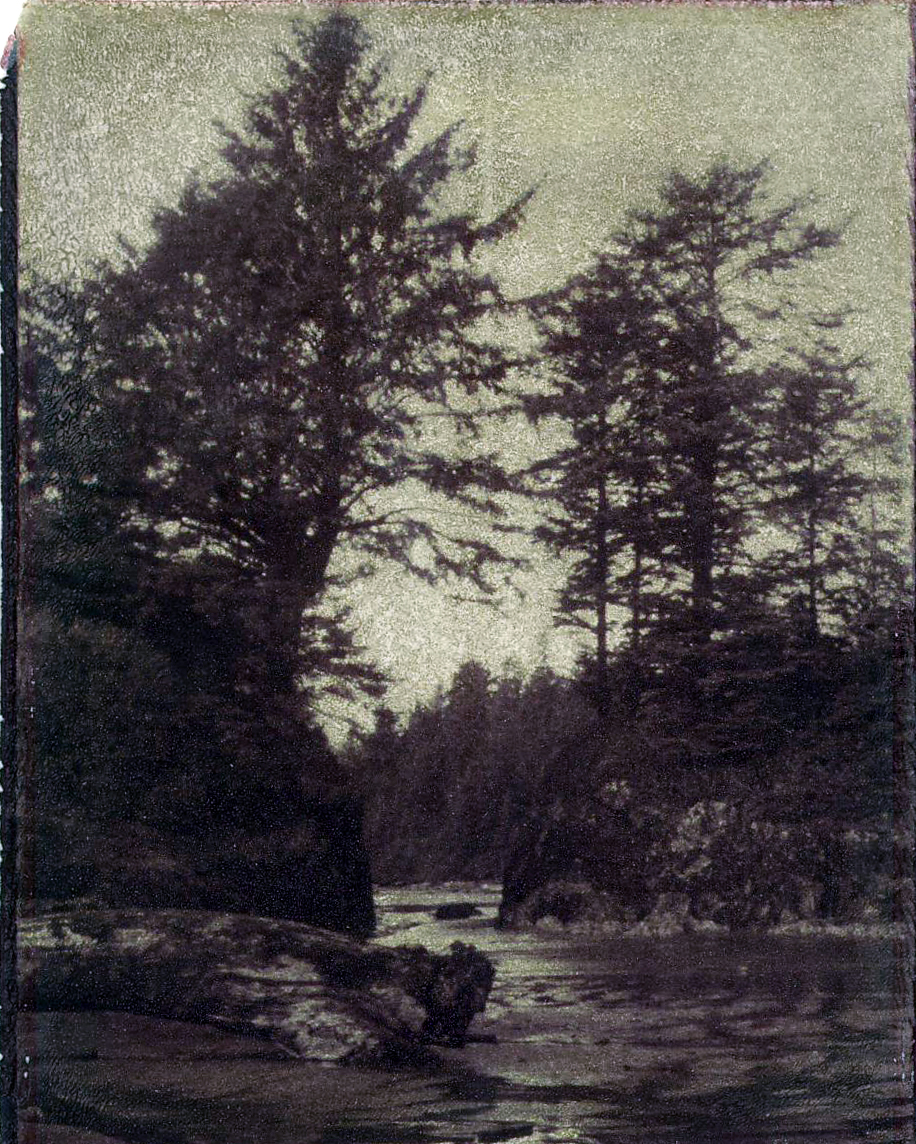
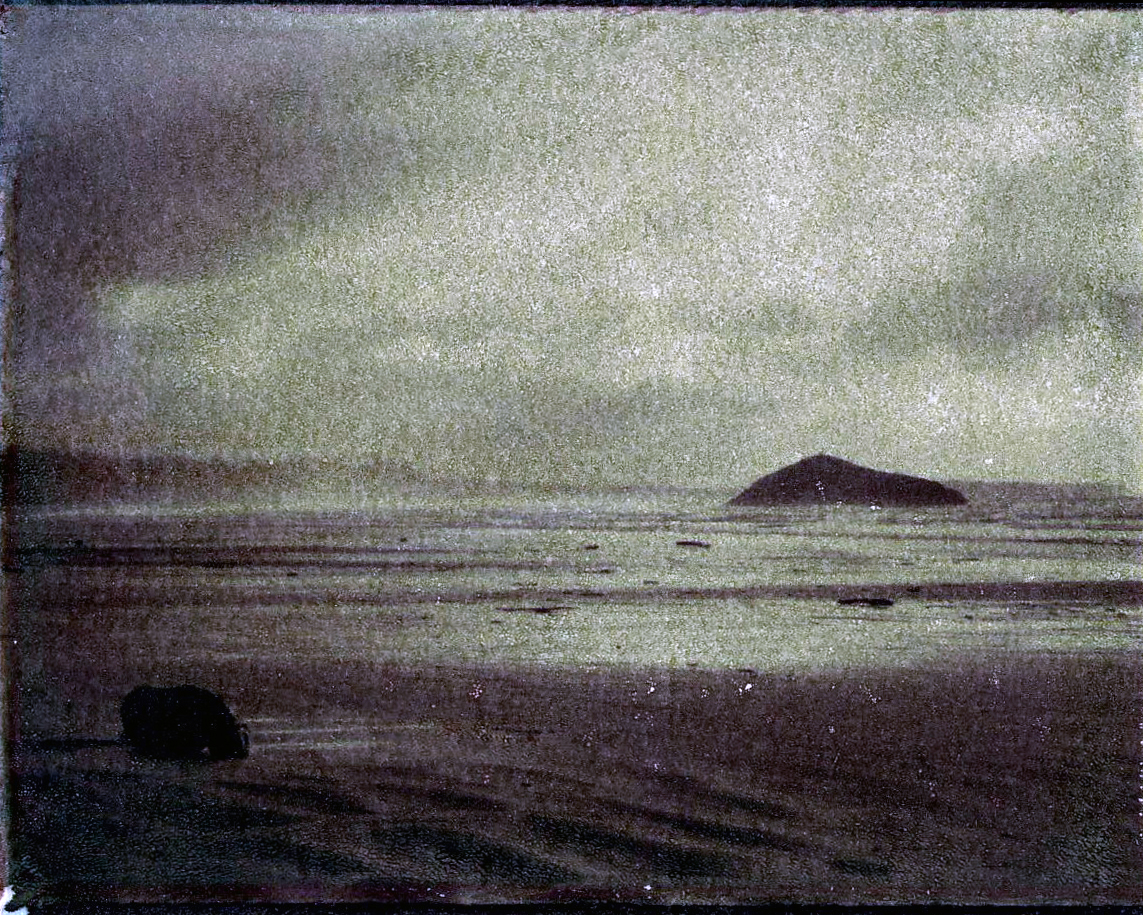
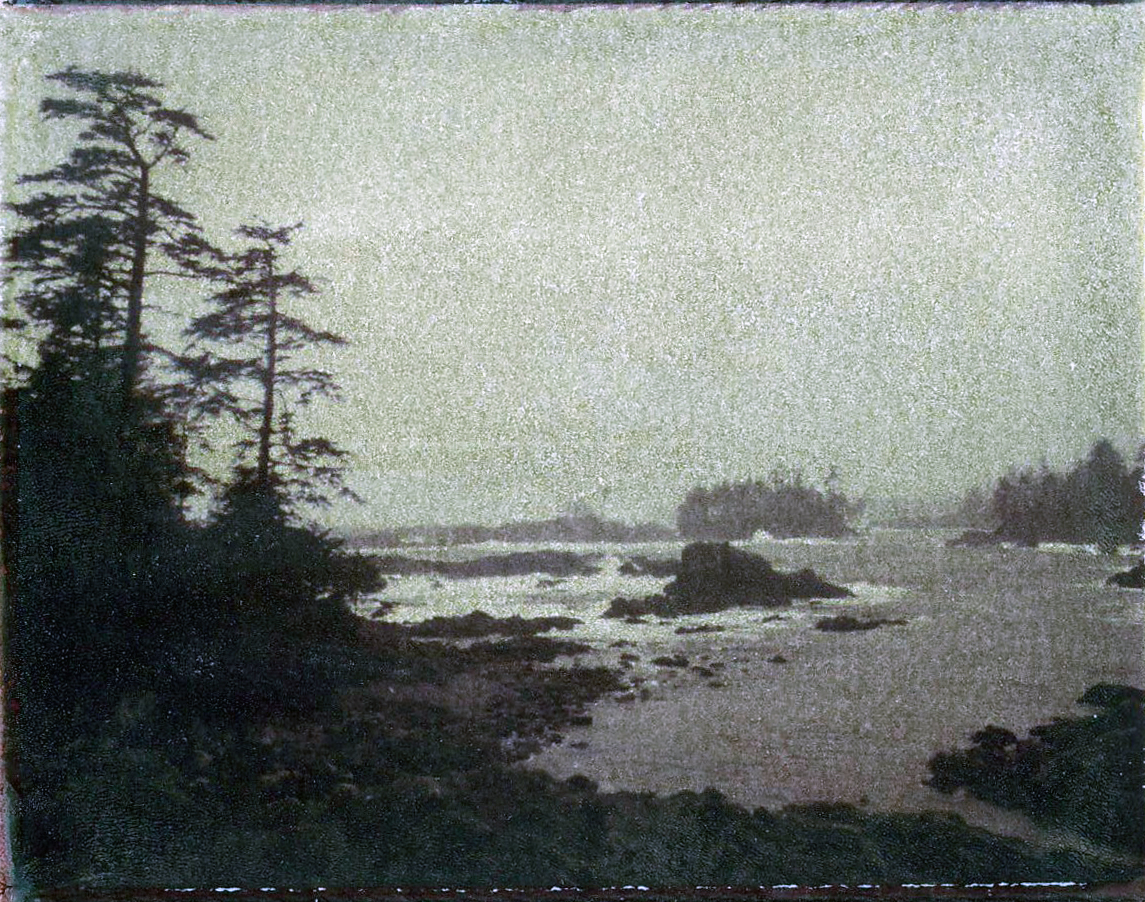
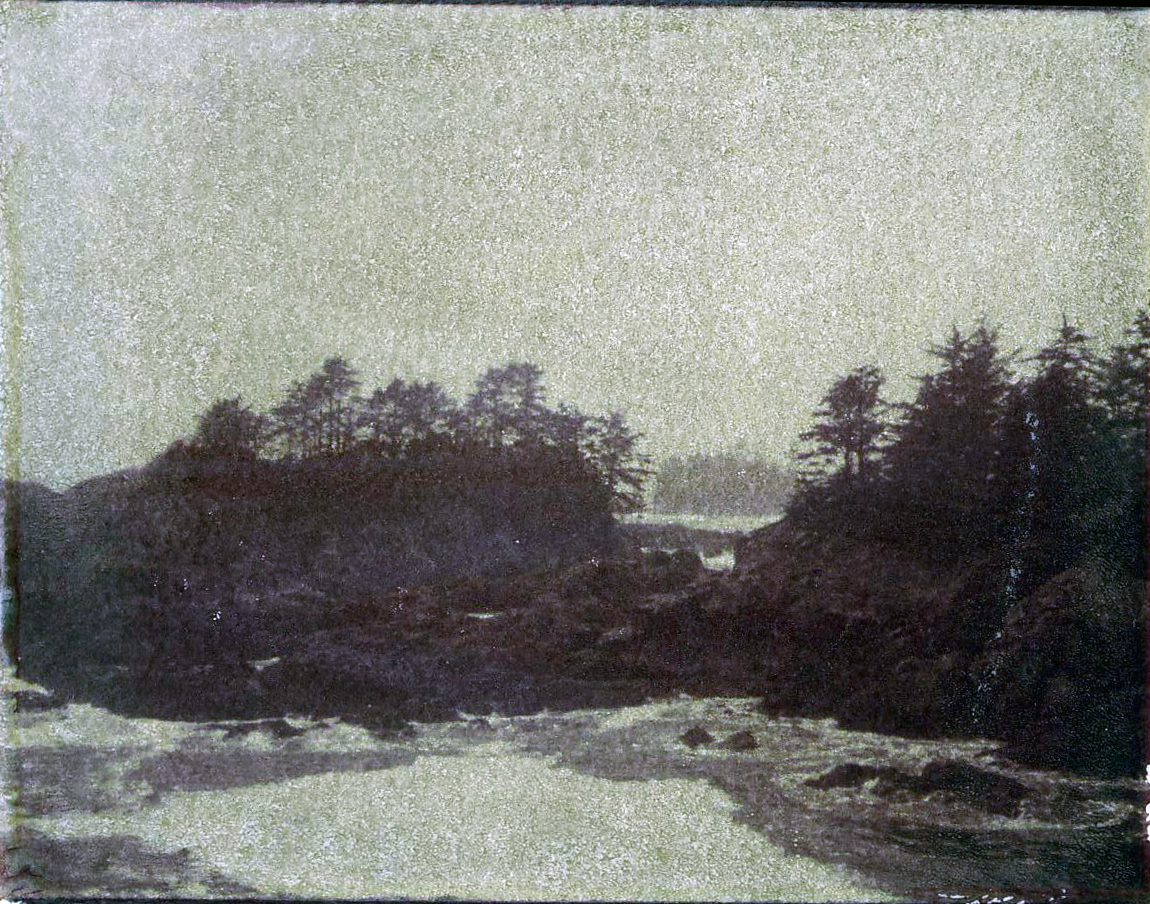
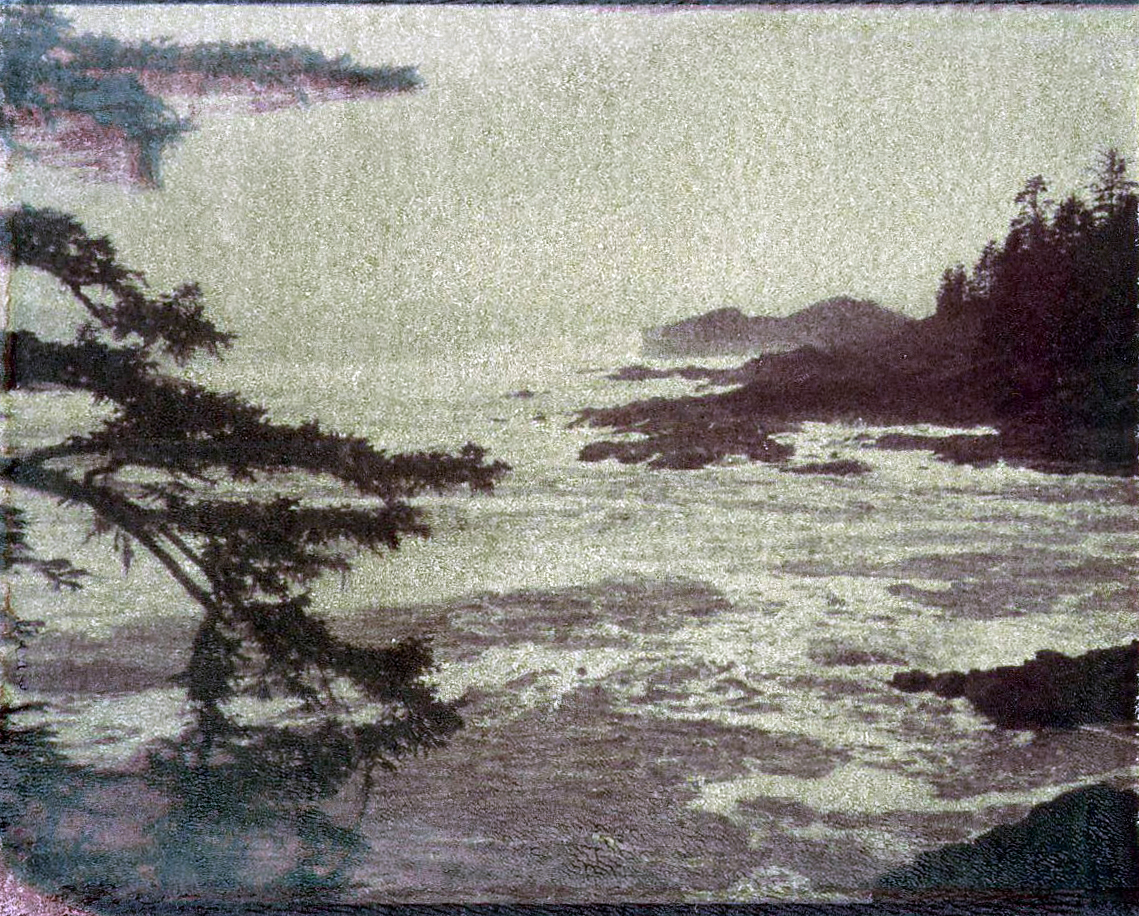
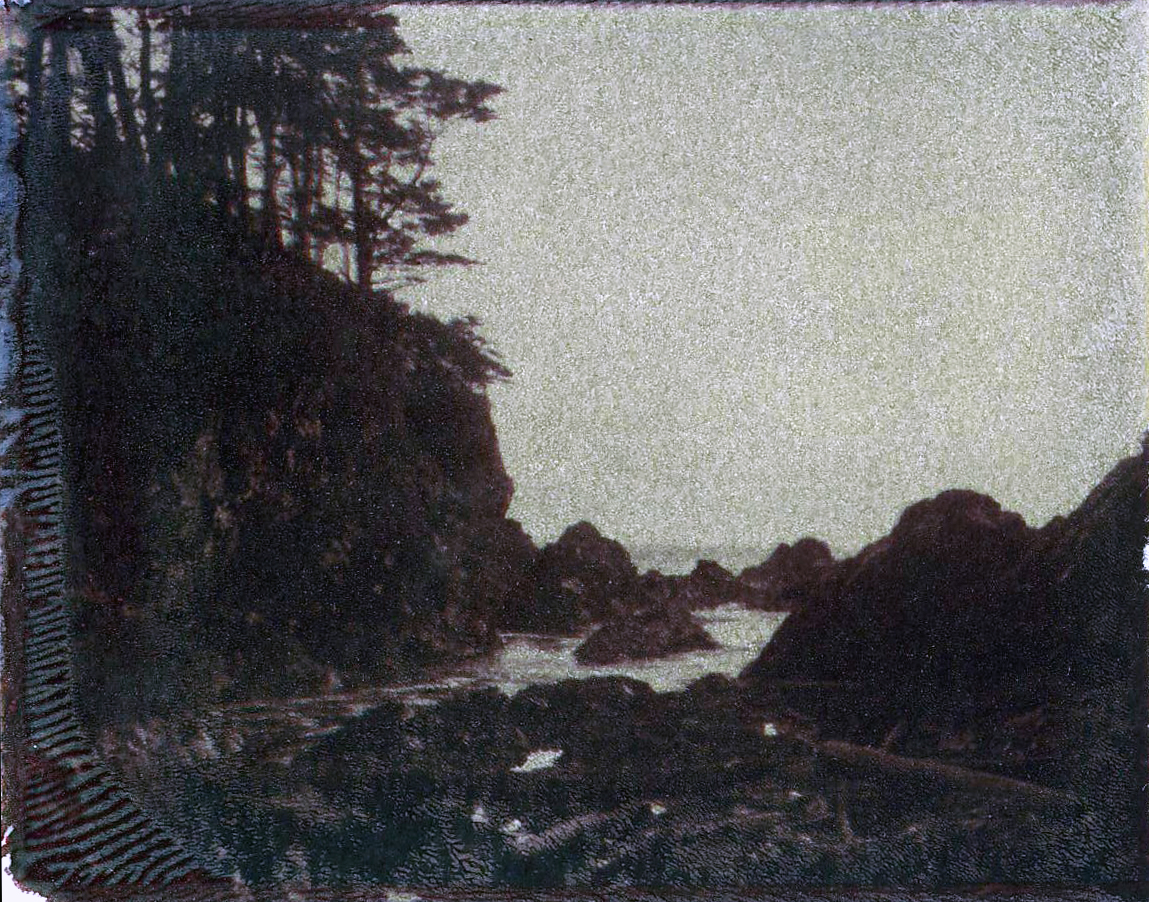
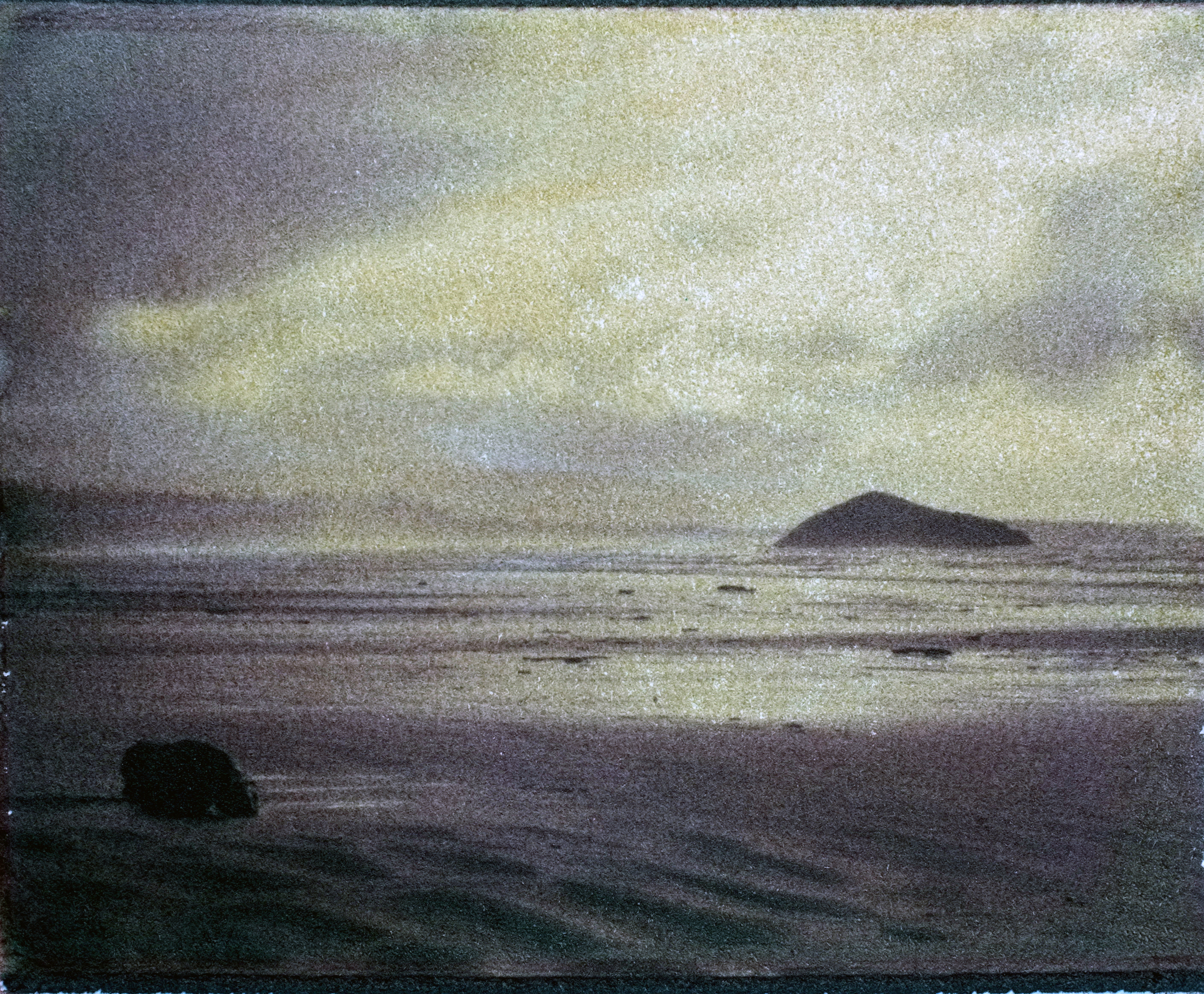

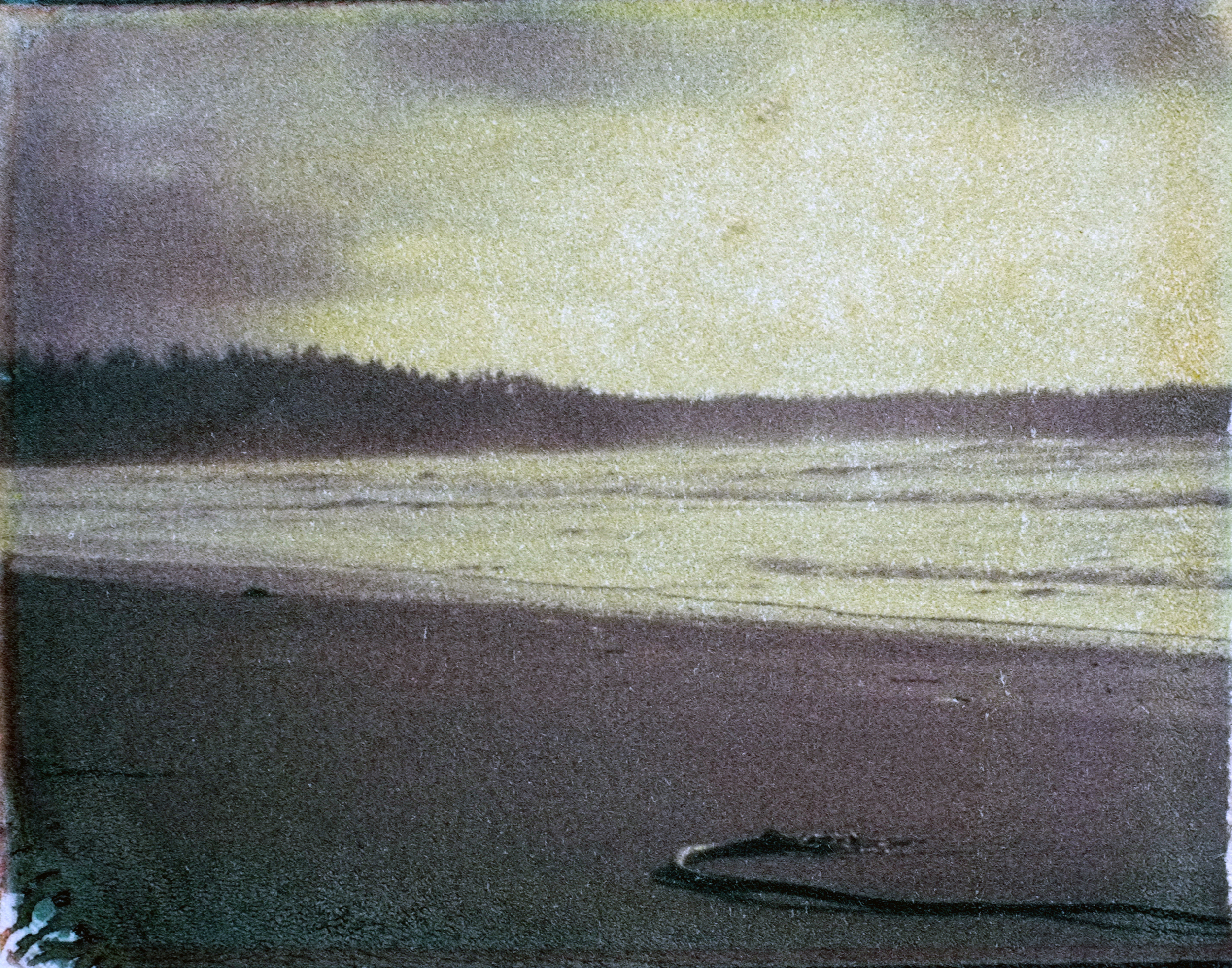

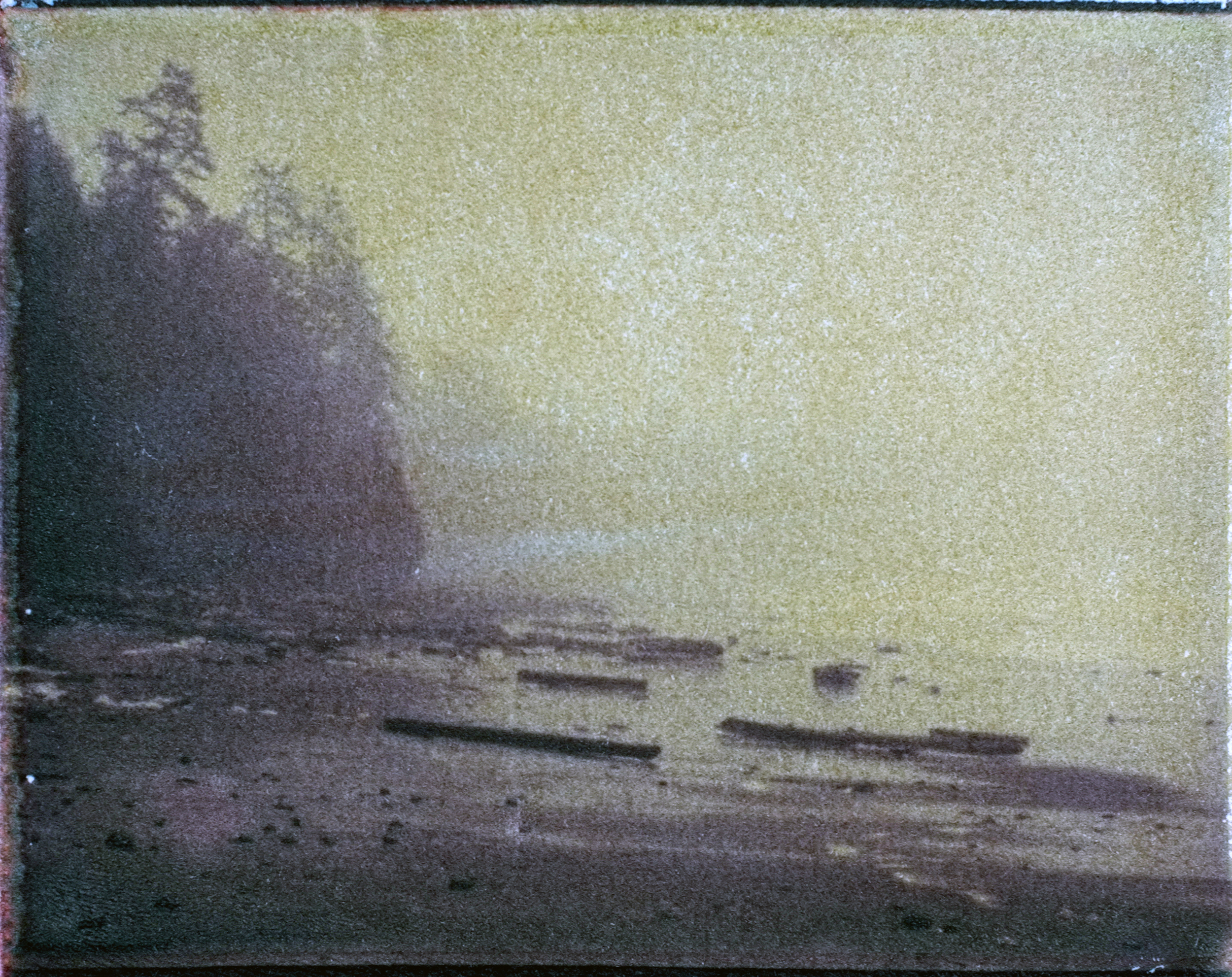

And then there were none. My intent is to look at the transformation of environment both by time and human impact by transcending the majestic landscape to instead visualize the continual loss of the “pristine” environment in a seemingly irreversible cascading effect. We are inundated with statistics and images about increasing glacier melt, global warming trends, and severe weather events so much so that we tend to gloss over the headlines as each seems direr then the last. Society is becoming increasingly passive which takes away our personal agency to slow the perilous path we are on. I believe that showing man’s damage in a striking way has power for change and is a vessel for examining our values.
Forests form a part of the collective identity of British Columbians and these images examine old and second growth forests. Through the Polaroid emulsion lift process the images take on a dreamlike appearance and evoke fleeting memories of our past. Polaroid emulsion lifts are created by using integral Polaroid film and separating the emulsion from the plastic front and the chemically impregnated rear of the film. The emulsion layer is floated off in water and transferred to a different medium. This process is exceedingly delicate as the emulsion layer is very thin and prone to damage.
Polaroid transfers are made using peel-apart Polaroid film whereby the negative is used to transfer the colour dye to a different medium than the positive it was intended for. The film is peeled apart as soon as the picture is exposed. The Polaroid transfers on display are accomplished by projecting an image from a 35mm black and white Scala slide onto Polaroid 669 film and then transferring the image to print media paper. It is a difficult process as many times part of the image lifts up when the Polaroid backing is removed and there is little control over the exposure of the final print. Exposure compensation must be done when projecting the slide as the Polaroid negative is severely underexposed in the process and so will provide an unusable print.
